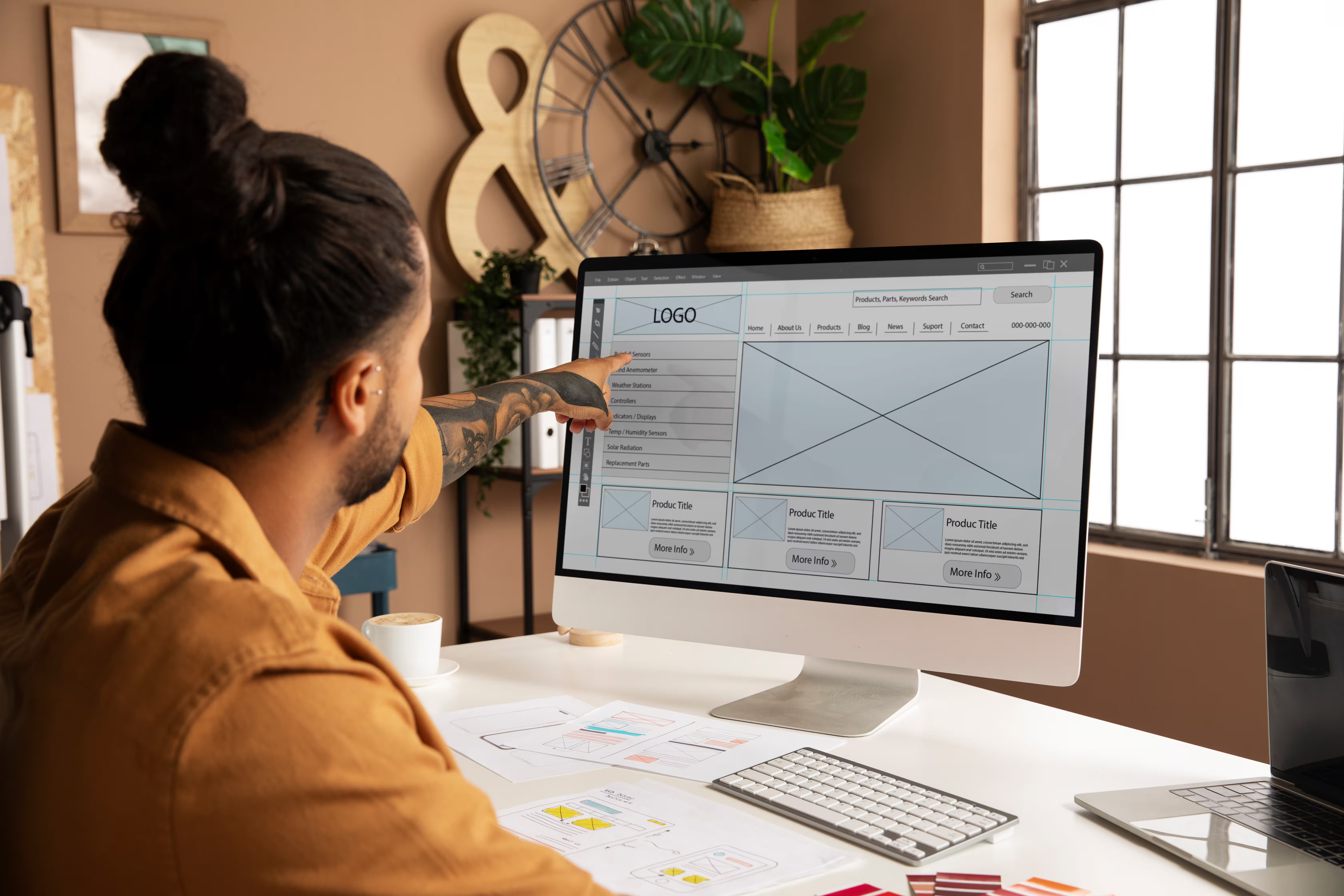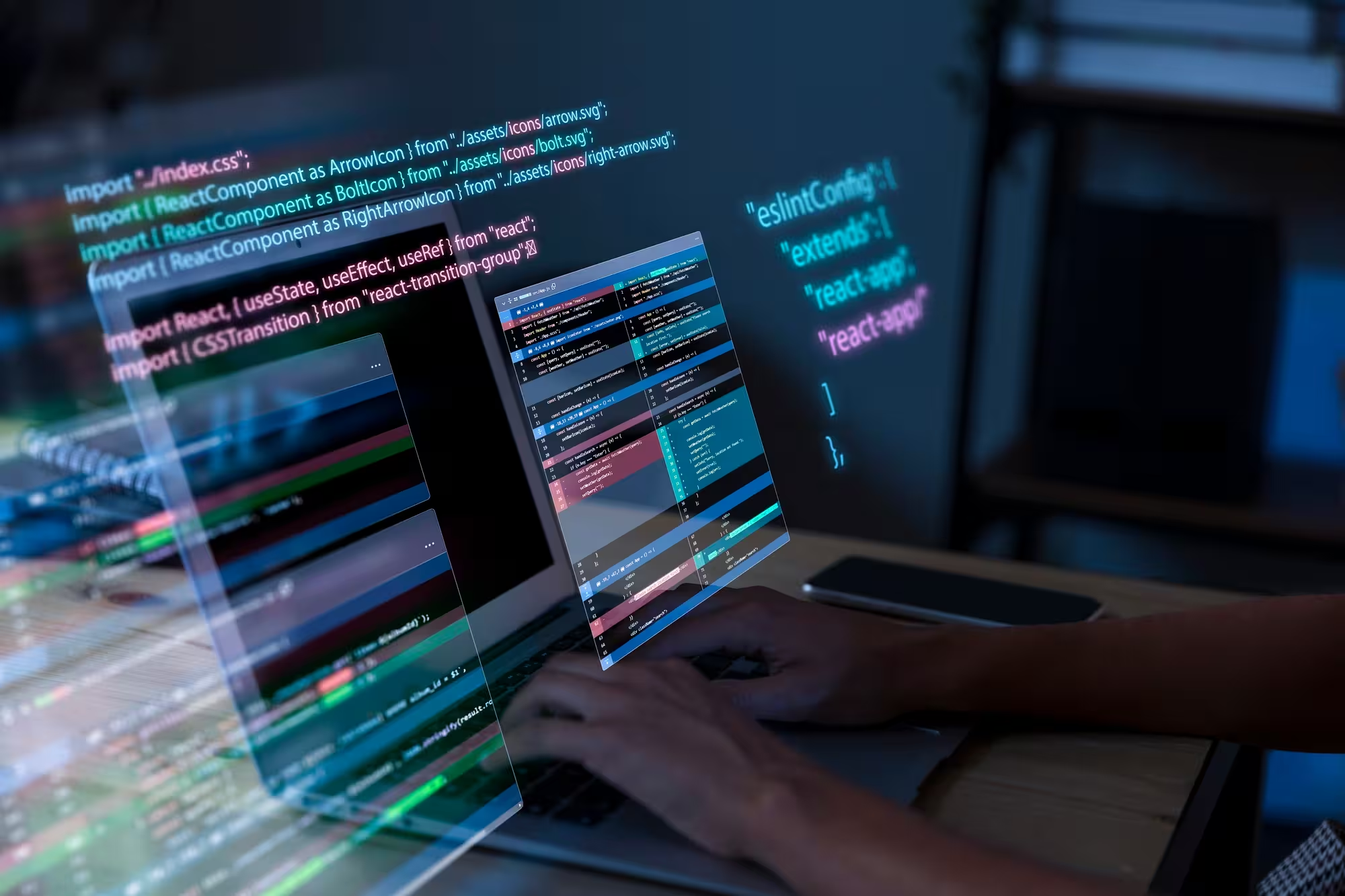With the rapid advancement of AI technology, many fear that there will soon be a time when AI will make designers and developers obsolete. On the other side, many professionals see AI as a tool that will boost their workflow and help them produce better work. Read further and learn how AI is changing the web design and development sphere, and what can we expect in the future.


What is Artificial Intelligence (AI)?
Before going down the rabbit hole on how AI is shaping the future of development and design, let's get over some basics.
By TechTarget's definition, artificial intelligence is the simulation of human intelligence processes by machines. Specific applications of AI include expert systems, natural language processing, speech recognition, and machine vision.
In simple terms, the main goal behind AI is to build smart machines capable of performing tasks that require human intelligence. One of the vital aspects of AI technology is its ability to model the human mind and turn data into actionable information. AI systems thus ingest large amounts of labeled training data, analyzing it to make future predictions.
To make this more understandable, let's take a chatbot as an example. They are powered by AI and fed with real chat examples. This information teaches AI to produce lifelike exchanges with people, or an image recognition tool can learn to identify and describe objects in images by reviewing millions of examples.
Last but not least, AI focuses on three cognitive skills:
- Learning process. Acquiring data and creating rules on how to turn this data into actionable information.
- Reasoning processes. Learning to use the correct algorithms to reach the desired outcome.
- Self-correction processes. Continuously improving algorithms to produce better and better results.
Most common AI use cases
Ai is not used only for complex and highly advanced tasks. We can find AI technology in most tech products, including mobile apps and smartphones. Spotify uses AI to create personalized music recommendations to improve user experience. Google relies on AI to improve its search engine and cooking robots to automate tasks like chopping veggies and making dough.
AI is also used by the most widely adopted smart home assistants like Amazon Alexa, Google Home, and Apple HomeKit. Those smart home assistants rely on Ai technology to analyze and collect data to make daily life easier and more efficient.
Since you are reading this article, you are probably more interested in use cases that are the most prominent in design and development. Let's go through some concrete examples closely related to those two fields.
DALL-E
DALL-E is a machine learning model introduced by OpenAi developed to produce images from text. DALL-E is a neural network that can generate realistic images solely from the object or scene description. The system uses a transformer-based neural network that deepens the learning and correctly predicts the images from text prompts. Among its diverse set of capabilities we can include:
- Creating anthropomorphized versions of animals and objects.
- Combining unrelated concepts in plausible ways.
- Rendering text,
- Applying transformations to existing images.
It can generate images in multiple styles, including photorealistic imagery, painting, and emoji. It goes even further, and auto-readjusts design elements in a novel composition to create new art.

ChatGPT
Another revolutionary technology introduced by OpenAi is the chatbot ChatGPT. Introduced in November 2022, ChatGPT gained 1 million users only 5 days after its release. ChatGPT is an AI-driven tool that enables you to have a human-like conversation with a chatbot. The dialogue format allows the tool to answer the follow-up questions, admit its mistakes and even challenge incorrect premises.
While ChatGPT still has many limitations, the future version could prove disruptive for search engines like Google. Its simple way of delivering answers may serve as a great work assistant to speed up and make work more effective. Today many creatives and other professionals are using ChatGPT:
- To research and analyze different topics.
- As an assistant to write custom code.
- To speed up content creation.
- Find quick business intelligence answers.

Stable Diffusion
Stable Diffusion is a deep learning, text-to-image model introduced in 2022 by the CompVis group at LMU Munich. Its main purpose is to enable you to generate detailed images from text descriptions. You can generate new images from scratch or re-draw existing images by manipulating text prompts. You can also tweak the already existing images via inpainting and outpainting.

MidJourney
Last but not least is Midjourney, an independent research lab that produces a proprietary AI program under the same name that creates images from texts. The tool is still in beta and can be accessed only through a Discord bot.
The founder David Holz, says Midjourney is a tool for the fast prototyping of artistic concepts. The tool's main objective is supposed to be an assistant to help creatives work more efficiently.
Despite being in beta, Midjourney has already recognition by notable companies and professionals. A famous newspaper, The Economist used Midjourney to create a front cover for an issue in June 2022. Some other notable use cases were:
- Creating a children's book in a span of a weekend.
- Using the tool to generate images for Warzel's newsletter in The Atlantic.
- 10-minute long segment on Midjourney in the episode of Last Week Tonight with John Oliver.

Will AI replace engineers and designers?
As Ai is becoming better than ever, companies are trying to leverage the power of technology to cut costs to boost profits. Many coders and designers thus question their future and careers. Will Ai replace all engineers and designers shortly?
The short answer to this question is no. However, AI will play a vital role in our future, so you should embrace it.
With the help of Ai, most engineers won't spend writing large blocks of code for the majority of the time. Their role will shift from writing specific code to complex problem-solving, implementing and effectively deploying AI, and managing sophisticated design systems. BCS writes that design mindset and thinking will be foundational skills for IT professionals as AI will take a big portion of operative work.
What about designers? With impressive art generated by tools like Midjourney, is there a future for them?
Yes. AI can help designers curate art but do not have the necessary soft skills. A designer must know how to listen to clients, show empathy, and find appropriate solutions for real-world situations. AI can't read between the lines of communication and take a holistic approach to understanding the client's needs. AI's role will be to complement and boost their work. It can analyze data and offer creative suggestions. Another use case would be to speed up the prototyping and ideation phase.
How can AI assist software developers?
There are many occasions where coders can leverage the power of AI. AI can assist software engineers to:
- Automate code reviews and performance optimizations.
- Improve user experience by analyzing user behavior.
- Automate repetitive and precise tasks with a high margin of error.
- Automate code refactoring when the application of the latest version of a specific technology emerges.
- Analyze large system logs to identify and predict degrading issues before they become critical problems.
- Improve productivity through method recommendations and parameter in-fills.
How can AI assist designers?
There are many occasions where designers can leverage the power of AI. AI can assist designers with:
- Collect UI and UX inspiration.
- Generate unique app and flow ideas.
- Generate design options based on specific parameters.
- Automate routine tasks such as resizing the images.
Final thoughts
In recent years technology advancements have skyrocketed. AI technology was once unimaginable, and today AI is a part of our everyday life. Companies use AI to boost productivity, cut costs and improve user experience.
Spotify leverage the power of AI to create personalized playlists for its users. Amazon uses AI to collect your buying habits and recommends products before you even need them. Apple uses AI to enable FaceID and power its smart assistant Siri.
With the rise of AI technology, many professionals in creative and technical fields fear for their future. But there is no need for fear. AI will not replace humans but become a high-performing assistant that will help us work faster and better.
Designers and developers are already leveraging the power of no-code tools to boost their workflow. Webflow allows users to bridge the design and development process without writing a single line of code. Despite tools like this, classic designers and coders have not gone obsolete. They turned into Webflow developers to leverage their specific skill set and use Webflow as an advantage to work better.
In the near future, AI technology will help us:
- Collect UI and UX inspiration.
- Generate unique app and flow ideas.
- Generate design options based on specific parameters.
- Automate code reviews and performance optimizations.
- Improve user experience by analyzing user behavior.
- Automate repetitive and precise tasks with a high margin of error.




















